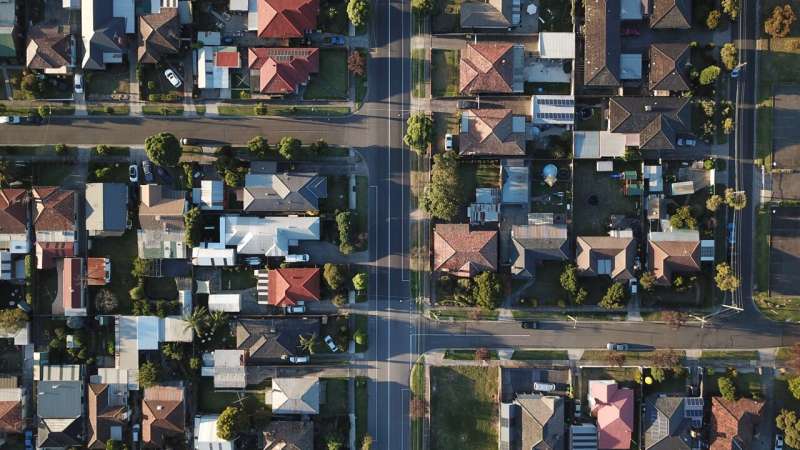Credit: Unsplash/CC0 Public Domain
The United States is experiencing a housing shortage. At least, that is the case according to common belief—and is even the basis for national policy, as the Biden administration has stated plans to address the housing supply shortfall.
But new research from the University of Kansas finds that most of the nation's markets have ample housing in total, but nearly all lack enough units affordable for very low-income households.
Kirk McClure, professor of public affairs & administration emeritus at KU, and Alex Schwartz of The New School have now co-written a study published in the journal Housing Policy Debate. They examined U.S. Census Bureau data from 2000 to 2020 to compare the number of households formed to the number of housing units added to determine if there were more households needing homes than units available.
The researchers found that only four of the nation's 381 metropolitan areas experienced a housing shortage in the study time frame, as did only 19 of the country's 526 "micropolitan" areas—those with 10,000-50,000 residents.
The findings suggest that addressing housing prices and low incomes is more urgently needed to address housing affordability issues than simply building more homes, the authors wrote.
"There is a commonly held belief that the United States has a shortage of housing. This can be found in the popular and academic literature and [that] from the housing industry," McClure said. "But the data shows that the majority of American markets have adequate supplies of housing available. Unfortunately, not enough of it is affordable, especially for low-income and very low-income families and individuals."
McClure and Schwartz also examined households in two categories: Very low income, defined as between 30% and 60% of area median family income, and extremely low income, with incomes below 30% of area median family income.
The numbers showed that from 2010 to 2020, household formation did exceed the number of homes available. However, there was a large surplus of housing produced in the previous decade. In fact, from 2000 to 2020, housing production exceeded the growth of households by 3.3 million units. The surplus from 2000 to 2010 more than offset the shortages from 2010 to 2020.
The numbers also showed that nearly all metropolitan areas have sufficient units for owner occupancy. But nearly all have shortages of rental units affordable for very low-income renter households.
While the authors looked at housing markets across the nation, they also examined vacancy rates, or the difference between total and occupied units, to determine how many homes were available. National total vacancy rates were 9% in 2000 and 11.4% by 2010, which marked the end of the housing bubble and the Great Recession. By the end of 2020, the rate was 9.7%, with nearly 14 million vacant units.
More information: Kirk McClure et al, Where Is the Housing Shortage?, Housing Policy Debate (2024). DOI: 10.1080/10511482.2024.2334011
Provided by University of Kansas
























